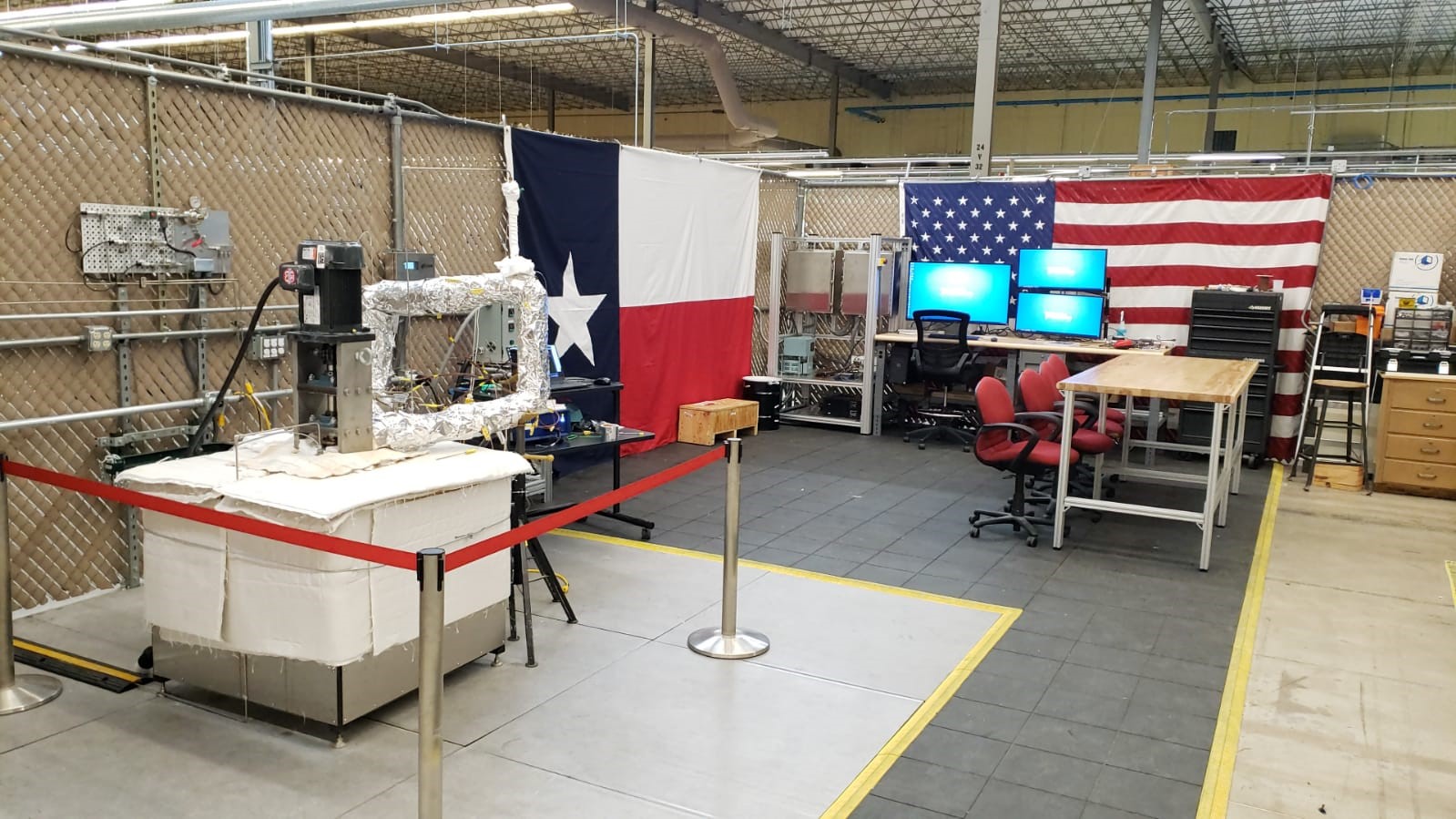The Thermal-Hydraulic Research Laboratory has established experimental capabilities to support the research and development of molten salt technologies for energy production, transfer, and storage.
The laboratory hosts a molten salt forced flow test facility consisting of two independent systems designed and operated to support testing under prototypic molten salt environments. The system can provide a wide range of flow, temperatures, and operating conditions, and can operate with different molten salts.
The facility is equipped with state-of-the-art instrumentation for flow, temperature and pressure measurements, and interfaced with advanced remote control and safety systems (Data Acquisition System – DAQ, and Programmable Logic Control – PLC).

Main Specifications
- High Temperature Operations (> 700 °C). Flow rates up to 200 Gal/min
- Chlorides and Fluorides Salts
- Corrosion Resistant Components
- State-of-the-art Instrumentation
- Ultrasonic Flow Meter
- Optical Fiber Sensors & Thermocouples
- Pressure Transducers
- Flow Visualization
- Infrared Thermography
- Industrial Programmable Logic Controller (PLC) and DAQ
- Remote Control and Operations
- Safety
Capabilities
- Thermal-Hydraulics and Heat Transfer (Forced Convection and Natural Circulation)
- Heat Exchangers design, optimization and testing
- Flow Visualization
- Components Testing
- Advanced Instrumentation Development and Testing
- Material Testing
- Purification and Filtering
Video 1. Overview of the Molten Salt Test Loop I
Video 2. High-Resolution Temperature Measurements supported by Optical Fiber Distributed Temperature Sensors (PF-DTS) in Molten Salts
Video 3. Two-Dimensional Temperature Distribution in Transient Molten Salts Environments using Optical Fiber Distributed Temperature Sensors (PF-DTS)
Publications
Ojasvin Arora, Blain Lancaster, Se Ro Yang, Rodolfo Vaghetto, Yassin Hassan, “Advanced flow and temperature measurements in a forced convection molten salt test loop.” Annals of Nuclear Energy 159 (2021) 108269 – https://doi.org/10.1016/j.anucene.2021.108269
